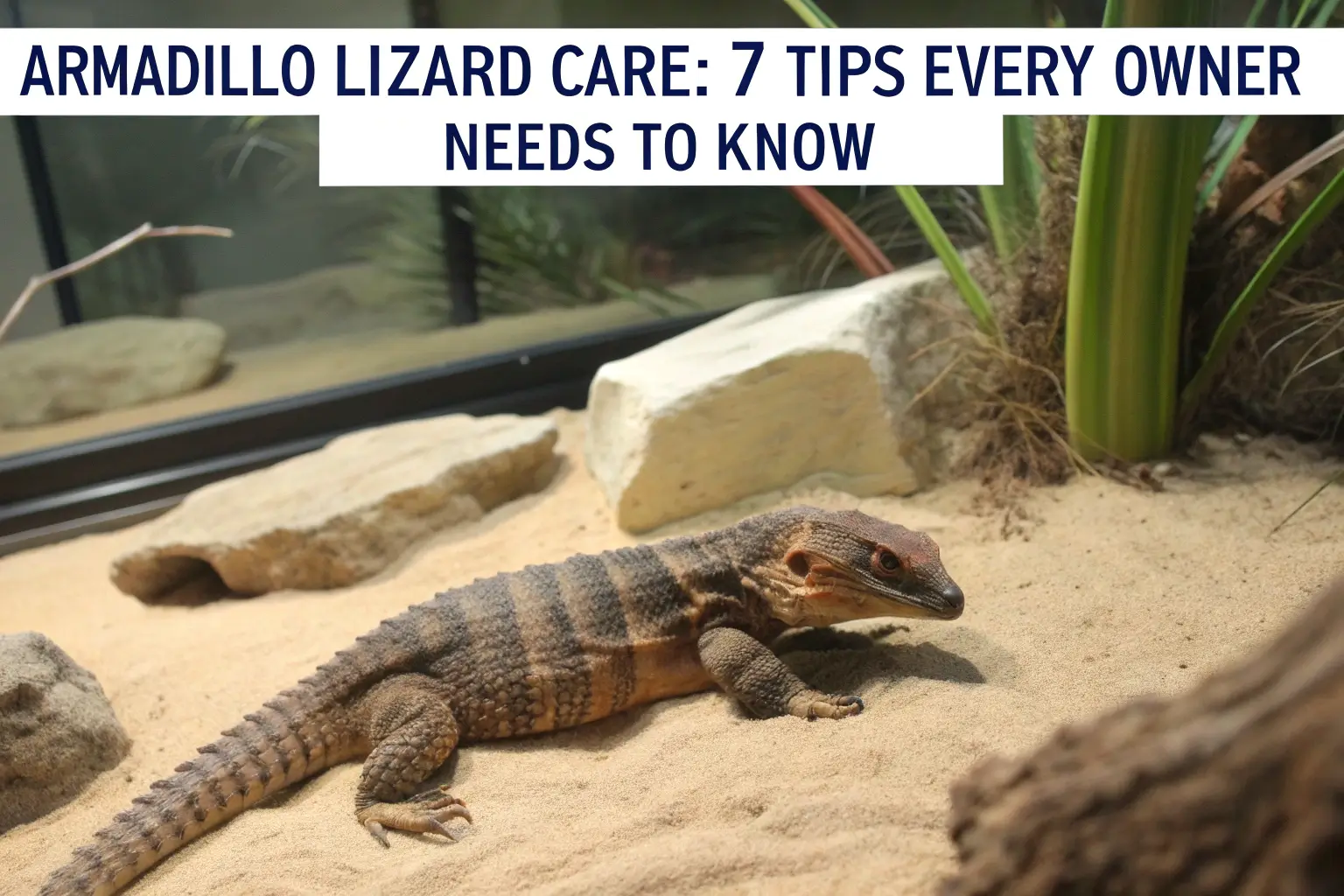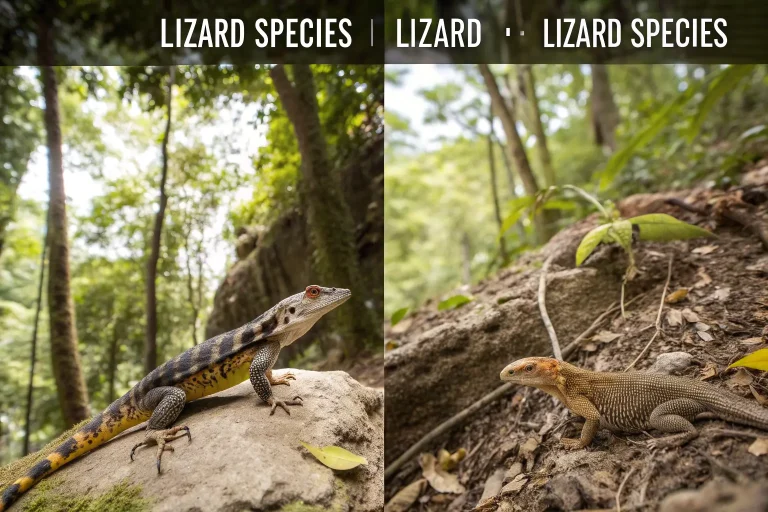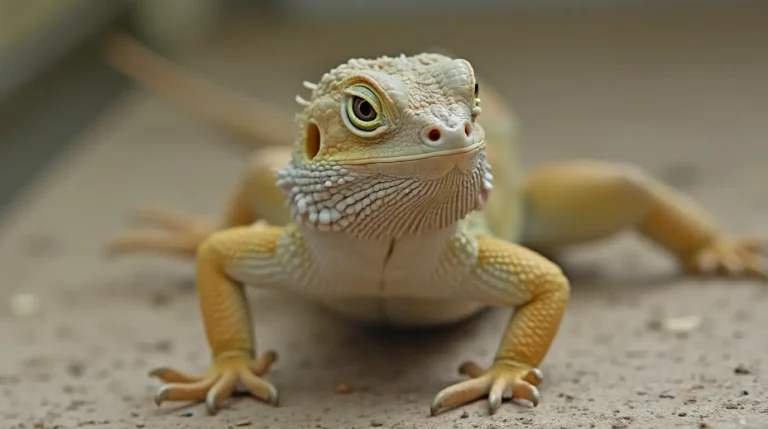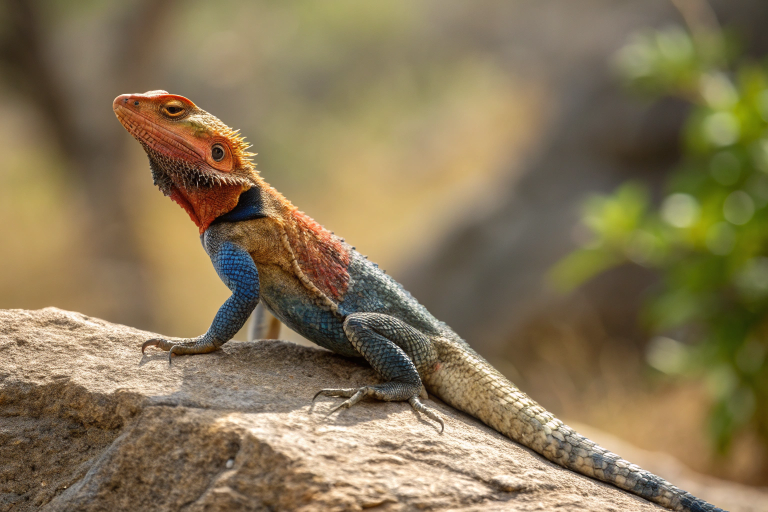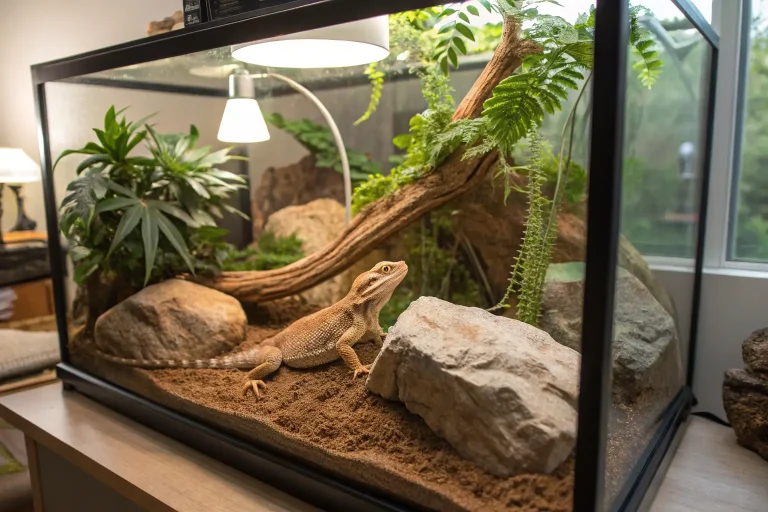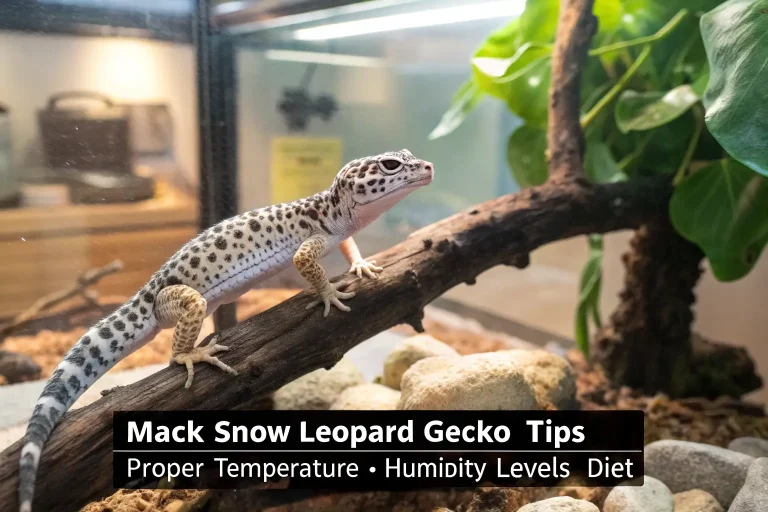Armadillo Lizard Care: 7 Tips Every Owner Needs to Know
The armadillo lizard, with its spiny appearance and peculiar defensive curl, captivates reptile enthusiasts worldwide. These fascinating creatures, native to the harsh deserts of South Africa, have become increasingly popular as exotic pets due to their unique characteristics and relatively manageable care requirements. Despite their tough exterior, armadillo lizards need specific attention and environmental conditions to thrive in captivity.
Understanding proper armadillo lizard husbandry isn’t just about keeping a cool pet—it’s about respecting and preserving a remarkable species that has evolved remarkable adaptations over millions of years. When these lizards curl into a ball, biting their tails to form an armored ring (much like their mammalian namesake), they’re displaying defensive behavior perfected through countless generations in their natural habitat.
Did you know that unlike many reptiles, armadillo lizards give birth to live young rather than laying eggs? This unusual reproductive strategy is just one of many fascinating aspects that make these desert-dwelling reptiles so special and worthy of our careful stewardship.
Species Overview
Scientific Name: Ouroborus cataphractus
Formerly classified in the genus Cordylus, the armadillo lizard received its current scientific classification, Ouroborus cataphractus, reflecting its unique tail-biting defensive posture. The genus name “Ouroborus” references the ancient symbol of a serpent eating its own tail, perfectly describing this lizard’s distinctive behavior.
Physical Characteristics
The armadillo lizard typically grows to 6-8 inches (15-20 cm) in length, sporting a flattened body covered in sharp, spiny scales that provide excellent protection against predators. Their coloration ranges from light brown to dark chocolate, often with yellowish or cream-colored undersides. The most distinctive feature is their heavily armored bodies with triangular, pointed scales arranged in rings around their bodies.
Unlike many lizards with sleek profiles, the armadillo lizard has a stocky build with powerful limbs and a short tail. Their heads are relatively broad with strong jaw muscles, enabling them to maintain their defensive curl for extended periods—sometimes up to an hour in threatening situations.
Subspecies
While no official subspecies of the armadillo lizard exist, populations from different regions of South Africa may exhibit slight variations in coloration and scale patterns. Scientists continue to study these regional differences, though all armadillo lizards share the same core characteristics and care requirements.
Habitat and Distribution
Natural Habitat
Armadillo lizards inhabit the arid regions of South Africa, particularly the rocky outcrops and scrublands of the Succulent Karoo and Fynbos biomes. These harsh environments are characterized by hot, dry conditions during the day and cooler temperatures at night. In the wild, these reptiles seek shelter in rock crevices, where dozens may congregate together for protection and thermoregulation.
Geographic Range
The natural range of the armadillo lizard is limited to the western and southwestern regions of South Africa, primarily within the Cape Provinces. They’re most commonly found in rocky terrains that provide ample hiding places and basking opportunities. Unlike some widely distributed reptile species, armadillo lizards occupy a relatively small geographic footprint, making them somewhat specialized to their particular habitat conditions.
Adaptations
These remarkable reptiles have evolved numerous adaptations to survive in their challenging environment. Their armored scales provide protection from predators and reduce water loss in the arid climate. The social grouping behavior helps maintain body temperature in the variable desert conditions. Perhaps most notably, their ability to curl into a defensive ball presents predators with nothing but sharp spines, making them an unappetizing meal option.
Another key adaptation is their relatively slow metabolism compared to other lizards of similar size. This allows armadillo lizards to survive on fewer food resources, an important advantage in their resource-limited natural habitat.
Diet and Feeding Habits
What It Eats
In their natural habitat, armadillo lizards primarily consume insects, with a particular fondness for termites. Their diet also includes various beetles, spiders, and other small arthropods available in their desert environment. Occasionally, they may consume small amounts of plant material, though this makes up a minimal portion of their diet.
For captive armadillo lizards, a diverse insect diet is essential. Crickets, dubia roaches, mealworms, and superworms form the foundation of their nutrition in captivity. These should be appropriately sized—no larger than the width of the lizard’s head—and gut-loaded with nutritious foods before feeding to maximize nutritional value.
Hunting or Foraging Behavior
Despite their armored appearance suggesting a defensive lifestyle, armadillo lizards are actually active foragers. In the wild, they emerge from their rocky shelters to search for food, primarily during cooler morning and evening hours. Their strong jaws and teeth are well-adapted for crushing the hard exoskeletons of beetles and other insects.
Captive specimens maintain these natural behaviors and will actively pursue prey items within their enclosure. Providing various feeding opportunities that stimulate this natural hunting behavior contributes significantly to their physical health and psychological well-being.
Dietary Needs
Proper nutrition for armadillo lizards requires careful attention to variety and supplementation. Calcium is particularly crucial, as calcium deficiency can lead to metabolic bone disease, a common problem in captive reptiles. Dusting prey items with calcium supplement (with or without vitamin D3, depending on UVB exposure) should be done 2-3 times weekly.
A multivitamin supplement should also be provided approximately once weekly to ensure complete nutrition. Feeding adult armadillo lizards every other day is typically sufficient, while juveniles may require daily feeding to support their growth and development.
Behavior and Social Structure
Social Behavior
Unlike many reptile species that lead solitary lives, armadillo lizards display remarkably social tendencies. In the wild, they often live in family groups of up to 30-60 individuals sharing rock crevices. This communal living appears to serve both protective and thermoregulatory functions, helping them manage the extreme temperature fluctuations of their desert habitat.
In captivity, armadillo lizards can be kept in small groups provided the enclosure is spacious enough to accommodate multiple hiding places and basking spots. However, caregivers should monitor interactions closely, especially during feeding, as dominance hierarchies can develop.
Communication
Armadillo lizards communicate through a combination of visual signals, body posturing, and physical interactions. Head bobbing, arm waving, and changing body position can all serve as communication methods between individuals. Territorial displays, particularly among males, may include push-ups, lateral compression to appear larger, and aggressive posturing.
While not vocal in the way some reptiles are, they may produce subtle hissing sounds when threatened or stressed. Observant keepers learn to recognize these behavioral cues as important indicators of their pets’ emotional states and social dynamics.
Mating and Reproduction
Breeding typically occurs during the spring and summer months after a period of brumation (a reptilian form of hibernation). Female armadillo lizards give birth to 1-4 live young after a gestation period of approximately 6-8 months—an unusual reproductive strategy among lizards, most of which lay eggs.
The young are born fully formed and independent, measuring about 3 inches (7-8 cm) in length. Sexual maturity is reached at approximately 3 years of age, and individuals can live 10-15 years in captivity with proper care—some specimens have even been documented reaching 20+ years.
Conservation Status
Endangerment Level
The armadillo lizard is currently classified as “Vulnerable” on the IUCN Red List, indicating significant conservation concern. While not yet facing imminent extinction, wild populations have declined considerably over recent decades due to multiple anthropogenic factors.
Threats
The primary threat to wild armadillo lizard populations is habitat destruction caused by agricultural expansion, mining operations, and infrastructure development within their limited range. Their specialized habitat requirements make them particularly susceptible to environmental changes.
Additionally, illegal collection for the exotic pet trade has severely impacted wild populations. Their distinctive appearance and relatively docile nature make them highly sought after, leading to unsustainable harvesting from the wild. Climate change presents another emerging threat, as rising temperatures and changing rainfall patterns alter the delicate desert ecosystems they depend upon.
Conservation Efforts
Several conservation initiatives are underway to protect remaining armadillo lizard populations. Protected areas have been established within their range, and South African legislation strictly regulates their collection and export. Conservation breeding programs aim to maintain genetic diversity and potentially reintroduce individuals to depleted areas.
Responsible pet ownership includes purchasing only captive-bred specimens from reputable breeders and avoiding animals of questionable origin. This approach helps reduce demand for wild-caught individuals while supporting sustainable breeding practices.
Tips for Caring for the Armadillo Lizard
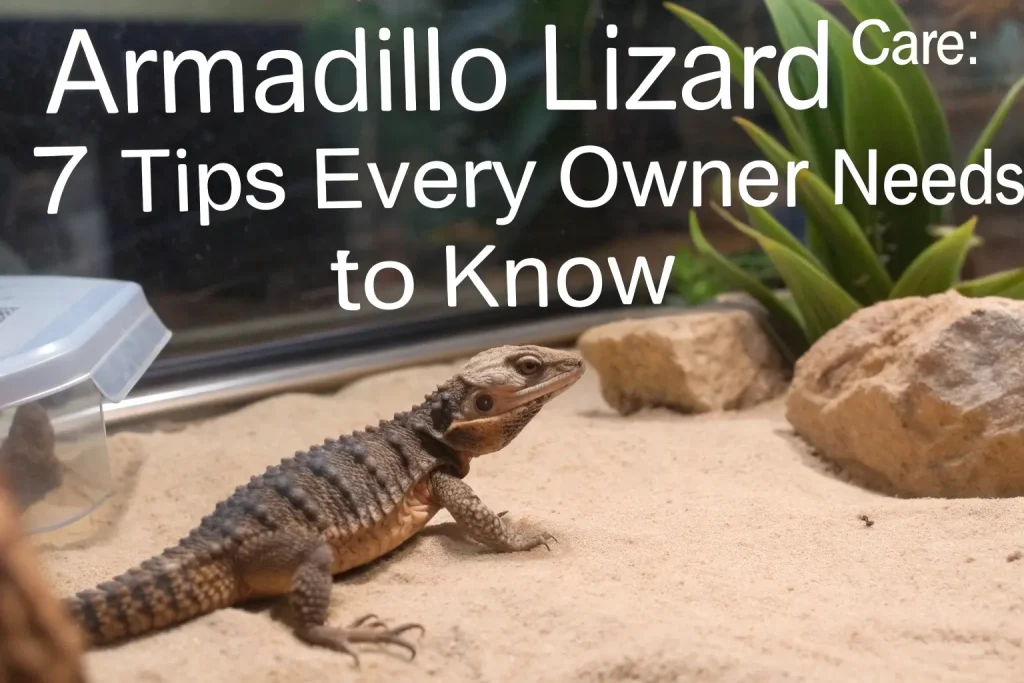
1. Create an Appropriate Enclosure
A single adult armadillo lizard requires a minimum of a 20-gallon terrarium, though larger is preferable. For pairs or small groups, a 40-gallon or larger enclosure is necessary. The terrarium should be longer rather than taller, as these are primarily terrestrial lizards.
Include multiple hiding spots using rock formations, cork bark, or commercial reptile hides. Stack these securely to prevent collapse, creating crevice-like spaces that mimic their natural rocky shelters. A substrate of reptile-safe soil, sand, or a bioactive mix approximately 2-4 inches deep allows for natural behaviors including occasional digging.
“Creating a proper enclosure for an armadillo lizard is about replicating their natural rock crevice habitat,” says Dr. Sarah Jenkins, exotic veterinarian specialist. “These animals need secure hiding places where they can feel protected while still having access to proper temperature gradients.”
2. Maintain Proper Temperature Gradients
Armadillo lizards require a proper temperature gradient to thermoregulate effectively. The warm side of the enclosure should maintain 85-90°F (29-32°C) during the day, with a basking spot reaching 95-100°F (35-38°C). The cooler side should remain around 75-80°F (24-27°C).
Nighttime temperatures can drop to 65-70°F (18-21°C) across the entire enclosure. Use a combination of ceramic heat emitters, basking lamps, and under-tank heating pads controlled by thermostats to achieve these gradients. Always monitor temperatures with reliable thermometers placed at both ends of the enclosure.
3. Provide Essential UVB Lighting
UVB lighting is non-negotiable for armadillo lizard health. Proper UVB exposure enables vitamin D3 synthesis, crucial for calcium metabolism and preventing metabolic bone disease. Choose a high-quality reptile UVB bulb (5.0 to 10.0 strength) and position it according to manufacturer specifications.
Replace UVB bulbs every 6-12 months, even if they still produce visible light, as their UVB output diminishes over time. Ensure the lizard can reach within 10-12 inches of the UVB source while basking, and that mesh lids don’t filter out too much of the beneficial radiation.
4. Optimize Humidity and Hydration
Despite their desert origins, armadillo lizards require some humidity to thrive. Maintain ambient humidity levels between 30-50%, with occasional spikes to 60% to facilitate shedding. This can be achieved through limited misting every few days and providing a humid hide filled with slightly dampened sphagnum moss.
Always provide a shallow water dish large enough for the lizard to climb into but not so deep as to pose a drowning risk. Clean and refill this daily to prevent bacterial growth. Many armadillo lizards prefer to drink water droplets from surfaces rather than from dishes, so light misting on tank surfaces can encourage hydration.
5. Feed a Varied and Nutrient-Rich Diet
“The biggest mistake I see armadillo lizard owners make is relying on a single feeder insect,” notes exotic animal nutritionist Dr. Michael Powell. “These reptiles need dietary diversity to obtain all their required nutrients.”
Offer a rotation of properly gut-loaded insects including crickets, dubia roaches, mealworms, superworms, and black soldier fly larvae. Dust feeders with a calcium supplement 2-3 times weekly and a multivitamin once weekly. Adult armadillo lizards typically eat every other day, while juveniles benefit from daily feeding to support growth.
Occasionally offering small amounts of dark leafy greens like dandelion leaves, mustard greens, or kale provides additional nutrients, though these should constitute no more than 5-10% of the diet.
6. Monitor Health and Recognize Issues Early
Regular health monitoring is essential for early problem detection. Healthy armadillo lizards have clear, alert eyes, clean vents, and move actively when warm. They should shed their skin in patches rather than in one piece like many snakes.
Common health issues include metabolic bone disease (swollen limbs, soft jaw, lethargy), respiratory infections (wheezing, mucus around nose/mouth), and parasitic infestations (weight loss despite normal eating, abnormal stool). Establish a relationship with an experienced reptile veterinarian before emergencies arise, and schedule annual wellness exams.
7. Provide Environmental Enrichment
While not as active as some lizard species, armadillo lizards benefit greatly from environmental enrichment. Rearrange decor occasionally to create new exploration opportunities. Provide various textures and climbing surfaces that allow for natural behaviors.
Feeding methods can incorporate enrichment by occasionally hiding insects in puzzle feeders or among tank furnishings to encourage natural foraging behaviors. This mental stimulation is as important as proper physical care for overall well-being.
Interesting Facts
The armadillo lizard’s defensive curl can be maintained for hours, with individuals biting their own tails so firmly they sometimes draw blood. This remarkable adaptation led to their scientific genus name “Ouroborus,” referencing the ancient symbol of a serpent eating its own tail.
Unlike most reptiles that abandon their young immediately after birth or hatching, armadillo lizards show limited parental care, with females sometimes remaining near their offspring for several weeks after birth. This unusual behavior may provide additional protection during the vulnerable early development period.
These lizards have extremely long lifespans compared to similarly sized reptiles. While many small lizards live only 5-8 years, well-cared-for armadillo lizards routinely reach 15-20 years in captivity, with some individuals documented living beyond 25 years.
Their heavily armored scales contain bone tissue similar to osteoderms found in crocodilians, forming a protective armor remarkably evolved for their predator-rich environment. This adaptation gives them one of the most effective passive defense mechanisms in the reptile world.
Role in the Ecosystem
Ecological Importance
In their native habitat, armadillo lizards serve as important insect population controllers, helping to maintain the ecological balance by consuming large quantities of termites and other insects. This natural pest control benefits both the desert ecosystem and nearby human settlements by regulating potentially destructive insect populations.
As mesopredators (middle-level predators), they occupy a crucial position in the food web, serving as prey for larger predators like snakes, birds of prey, and small mammals while controlling smaller invertebrate populations. This intermediate position makes them valuable indicators of overall ecosystem health.
Impact of Decline
A significant decline in armadillo lizard populations could trigger cascading effects throughout their native ecosystems. Insect populations, particularly termites, might experience unchecked growth, potentially damaging native vegetation and altering the habitat structure for other species.
Higher-order predators that rely on armadillo lizards as part of their diet would face reduced food availability, potentially affecting their populations as well. The loss of this species would remove not only a fascinating component of South Africa’s biodiversity but also an important functional element of the desert ecosystem.
Conclusion
The armadillo lizard represents one of nature’s most fascinating evolutionary designs, combining specialized defensive adaptations with social behaviors unusual among reptiles. Their unique characteristics have made them popular in the exotic pet hobby, but this popularity comes with significant responsibilities for proper care.
By providing appropriate habitat conditions, nutrition, and preventative healthcare, owners can enjoy these remarkable reptiles for many years. However, the commitment to their well-being must include awareness of their conservation status and ethical sourcing from reputable breeders.
Whether you’re a current armadillo lizard owner looking to improve your husbandry practices or considering adding one of these distinctive reptiles to your family, understanding their specific requirements is essential. Through education and responsible ownership, we can help ensure both the welfare of captive specimens and the preservation of wild populations for generations to come.
Consider supporting conservation organizations working to protect the armadillo lizard’s natural habitat or educating others about the importance of purchasing only captive-bred specimens. When we care for these remarkable animals properly, we honor the incredible adaptations that have allowed them to survive and thrive for millions of years.
Frequently Asked Questions
How long do armadillo lizards live?
With proper care, armadillo lizards typically live 10-15 years in captivity, though some well-maintained individuals have been documented reaching 20+ years. Their longevity depends largely on habitat quality, nutrition, and preventative healthcare.
Can armadillo lizards be handled regularly?
While they can tolerate gentle handling, armadillo lizards are not typically “pet” lizards that enjoy frequent interaction. Limit handling to 5-10 minutes a few times weekly, supporting their entire body and avoiding their defensive curl, which can cause self-injury if triggered by stress.
Do armadillo lizards need companions?
Unlike many reptiles, armadillo lizards are somewhat social and can be kept in small groups provided the enclosure is large enough (40+ gallons for a pair). However, they can also thrive as solitary pets, so companionship should be considered optional rather than necessary.
How can I tell if my armadillo lizard is male or female?
Sex determination in armadillo lizards is challenging without professional expertise. Males tend to have slightly larger heads and more pronounced femoral pores on their hind legs. Females may have slightly wider abdomens, particularly during breeding season. For definitive sexing, consult an experienced reptile veterinarian.
Are armadillo lizards suitable for beginners?
While not the most challenging reptiles to maintain, armadillo lizards require specific temperature gradients, UVB lighting, dietary variety, and proper humidity levels that may be difficult for complete novices to manage consistently. They’re better suited for keepers with some prior reptile experience or beginners willing to thoroughly research and commit to their specialized needs.
How often should armadillo lizards be fed?
Adult armadillo lizards should typically be fed every 2-3 days, offering appropriately sized insects (crickets, dubia roaches, mealworms) dusted with calcium and vitamin supplements. Juveniles require daily feeding to support their growth and development.
Why is my armadillo lizard not eating?
Temporary fasting can result from stress, improper temperatures (especially if the basking area isn’t warm enough), illness, or seasonal changes. Ensure proper habitat parameters, particularly temperature gradients (85-95°F basking spot). If refusal persists beyond 1-2 weeks or is accompanied by other concerning symptoms, consult a reptile veterinarian.

